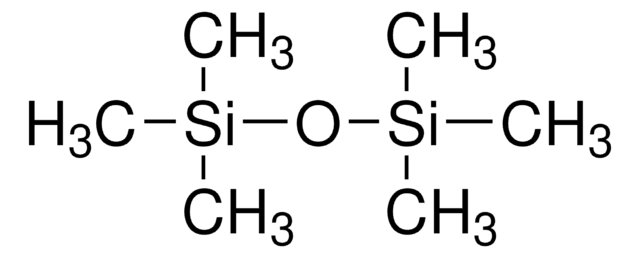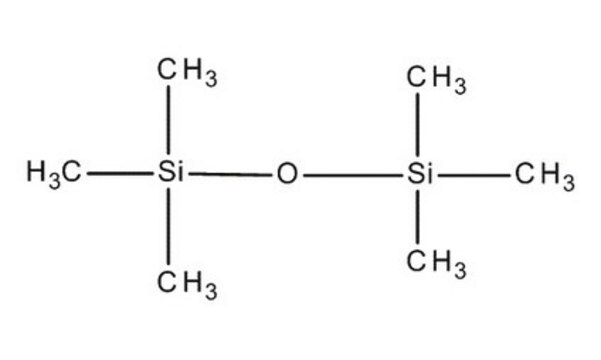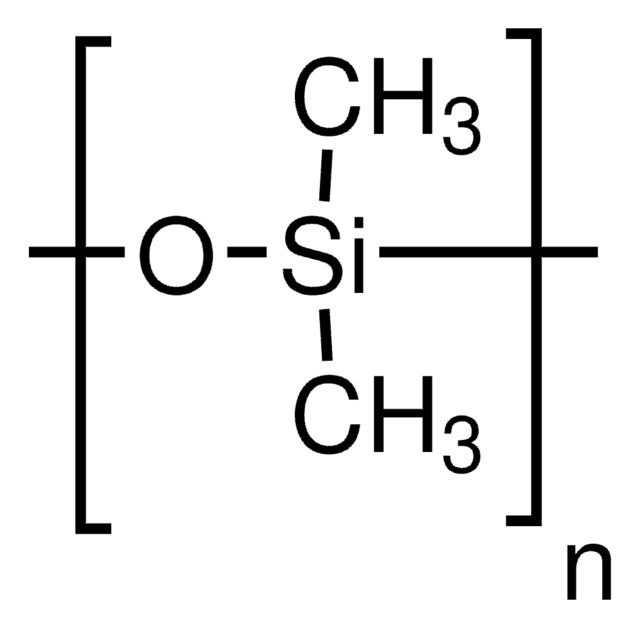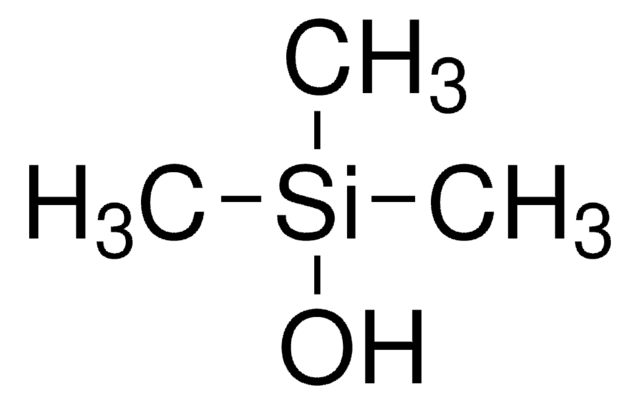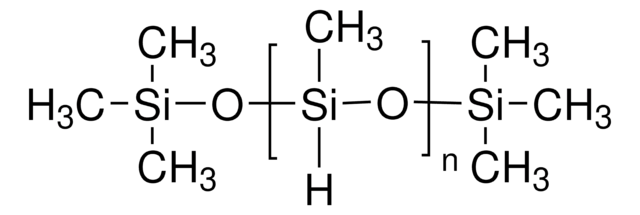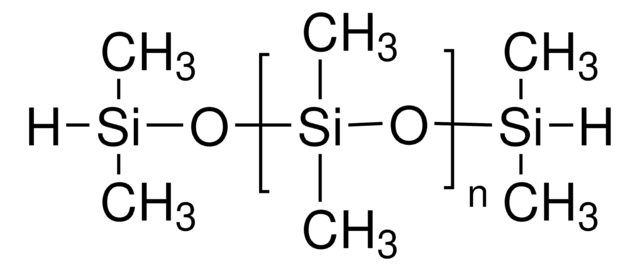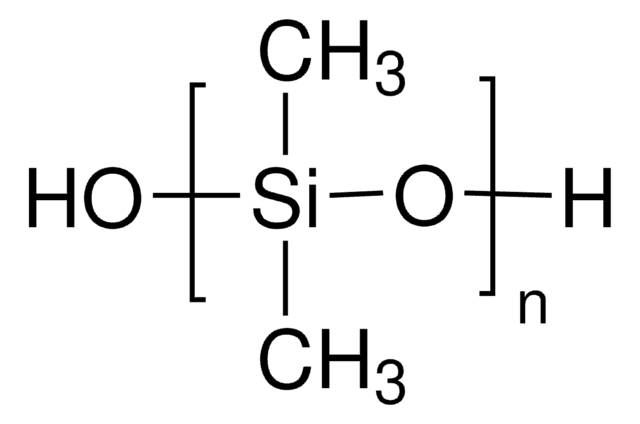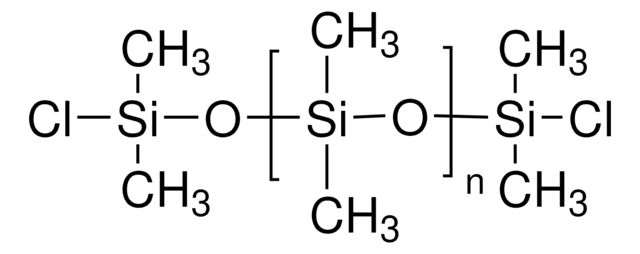469300
Hexamethyldisiloxane
viscosity 0.65 cSt (25 °C)
Sinónimos:
Poly(dimethylsiloxane), HMDSO
About This Item
Productos recomendados
densidad de vapor
>1 (vs air)
Nivel de calidad
índice de refracción
n20/D 1.377 (lit.)
viscosidad
0.65 cSt(25 °C)
bp
101 °C (lit.)
mp
−59 °C (lit.)
densidad
0.764 g/mL at 20 °C (lit.)
cadena SMILES
C[Si](C)(C)O[Si](C)(C)C
InChI
1S/C6H18OSi2/c1-8(2,3)7-9(4,5)6/h1-6H3
Clave InChI
UQEAIHBTYFGYIE-UHFFFAOYSA-N
¿Está buscando productos similares? Visita Guía de comparación de productos
Aplicación
- Superhydrophobic Surface Coating: Studies the application of hexamethyldisiloxane coatings on fabric masks via plasma treatment to achieve superhydrophobic properties, enhancing the masks′ resistance to moisture (M Prado et al., 2022).
- PECVD for Thin Film Coatings: Describes the use of hexamethyldisiloxane in plasma-enhanced chemical vapor deposition to create thin film coatings, exploring the effects of using extremely asymmetric capacitive RF discharge (Ž Gosar et al., 2020).
- QCM-Based VOC Sensors: Hexamethyldisiloxane thin films are used as sensitive coatings for quartz crystal microbalance sensors, enhancing their capability to detect various volatile organic compounds (M Boutamine et al., 2014).
- Hydrophobic-Hydrophilic Films: Explores the polymerization of hexamethyldisiloxane using atmospheric pressure plasma jets to create films with tailored hydrophobic and hydrophilic properties (M Bashir, S Bashir, 2015).
Palabra de señalización
Danger
Frases de peligro
Consejos de prudencia
Clasificaciones de peligro
Aquatic Acute 1 - Aquatic Chronic 1 - Flam. Liq. 2
Código de clase de almacenamiento
3 - Flammable liquids
Clase de riesgo para el agua (WGK)
WGK 2
Punto de inflamabilidad (°F)
21.2 °F - closed cup
Punto de inflamabilidad (°C)
-6 °C - closed cup
Equipo de protección personal
Eyeshields, Faceshields, Gloves, type ABEK (EN14387) respirator filter
Elija entre una de las versiones más recientes:
¿Ya tiene este producto?
Encuentre la documentación para los productos que ha comprado recientemente en la Biblioteca de documentos.
Los clientes también vieron
Artículos
Advances in the area of soft optoelectronics, with a focus on the development of organic optoelectronic devices on shape memory polymers (SMP) is discussed.
Global Trade Item Number
| Número de referencia del producto (SKU) | GTIN |
|---|---|
| 469300-250ML | 4061832358796 |
| 469300-50ML | 4061838140562 |
| 469300-5ML |
Nuestro equipo de científicos tiene experiencia en todas las áreas de investigación: Ciencias de la vida, Ciencia de los materiales, Síntesis química, Cromatografía, Analítica y muchas otras.
Póngase en contacto con el Servicio técnico